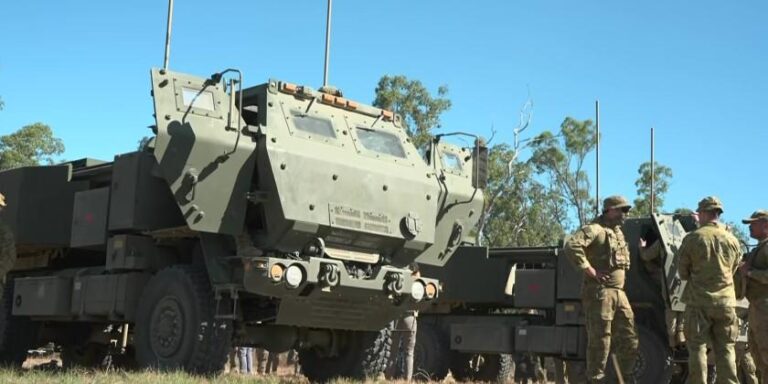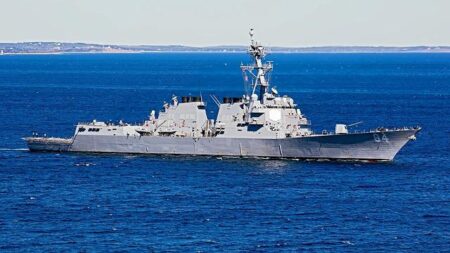The United States and Australia have officially commenced the Talisman Sabre 2025 joint military exercise, marking a critical phase in their ongoing defense partnership. This biennial event, renowned for enhancing interoperability and readiness between the two nations, brings together thousands of troops, advanced military assets, and cutting-edge technology across multiple training areas. As regional security challenges evolve, Talisman Sabre 2025 underscores the continued commitment of both countries to strengthen strategic cooperation and maintain stability in the Indo-Pacific region.
U.S. and Australia Launch Talisman Sabre 2025 Joint Military Exercises
The annual joint military exercises held by the United States and Australia have officially commenced, signaling a deepened commitment to regional security and operational readiness. This year’s event will focus on enhancing interoperability between allied forces, simulating complex combat scenarios, and refining strategies to address emerging threats in the Indo-Pacific region. More than 30,000 personnel from both nations are participating, supported by an extensive deployment of naval vessels, aircraft, and land assets.
Key objectives shaping this exercise include:
- Strengthening amphibious assault capabilities through joint landings and coordinated maneuvers.
- Enhancing cyber and electronic warfare resilience to counteract modern threats.
- Boosting command and control integration across multi-domain operations.
| Component | U.S. Contribution | Australian Contribution |
|---|---|---|
| Personnel | 20,000 | 10,000 |
| Naval Assets | 15 ships | 8 ships |
| Aircraft | 70 | 35 |
| Land Vehicles | 1,200 | 900 |
Strategic Objectives and Key Capabilities Highlighted in Multinational Drills
The joint exercises focus sharply on enhancing interoperability and expanding the operational reach of both U.S. and Australian forces. Key capabilities emphasized include rapid deployment, advanced maritime domain awareness, and integrated cyber defense operations. Participants are rigorously testing coordinated command and control structures designed to enable seamless information sharing and joint decision-making in high-pressure scenarios. This approach aims to better prepare forces for contingencies in the Indo-Pacific region, where agility and technological superiority are crucial.
Among the strategic objectives, strengthening amphibious readiness and multi-domain integration stands out as a priority. The drills also showcase cutting-edge technology integration, such as unmanned systems and networked sensors, to augment situational awareness and precision targeting. The table below summarizes some highlighted capabilities and objectives reinforced during the exercise:
| Strategic Objective | Key Capability | Expected Outcome |
|---|---|---|
| Interoperability | Joint Command & Control | Seamless operational coordination |
| Rapid Deployment | Amphibious Operations | Enhanced force mobility |
| Cyber Resilience | Defensive Cyber Operations | Secured communications |
| Multi-Domain Integration | Unmanned Systems | Improved reconnaissance & targeting |
Recommendations for Enhancing Interoperability and Regional Security Cooperation
To strengthen joint operational capabilities during Talisman Sabre 2025, it is imperative to prioritize standardized communication protocols and enhance real-time data sharing among participating forces. Establishing interoperable command and control systems will minimize delays in decision-making and improve situational awareness across multinational units. Additionally, incorporating joint training programs that simulate complex, multi-domain threat environments will foster mutual understanding and trust, enabling forces to respond cohesively to evolving security challenges in the Indo-Pacific region.
Regional security cooperation can be further advanced through fostering multilateral intelligence exchanges and regular diplomatic dialogues aimed at aligning strategic objectives. Investing in technology-sharing agreements and joint research initiatives will also bolster collective defense readiness. The table below outlines key focus areas and recommended actions to elevate interoperability and bolster regional security frameworks, ensuring a coordinated response to emerging threats.
| Focus Area | Recommended Actions | Expected Outcomes |
|---|---|---|
| Communication Systems | Implement unified secure channels | Seamless information flow |
| Joint Training | Realistic multi-domain scenarios | Enhanced operational cohesion |
| Intelligence Sharing | Establish regional fusion centers | Faster threat identification |
| Technology Collaboration | Coordinate R&D efforts | Advanced defense capabilities |
Wrapping Up
As Talisman Sabre 2025 officially commences, the joint U.S.-Australia exercise underscores the enduring strength of the bilateral alliance and their shared commitment to regional security in the Indo-Pacific. Over the coming weeks, participating forces will hone their interoperability and readiness, demonstrating a unified front amid evolving geopolitical challenges. Observers will be closely watching how this iteration of Talisman Sabre shapes defense cooperation and strategic deterrence in the years ahead.




